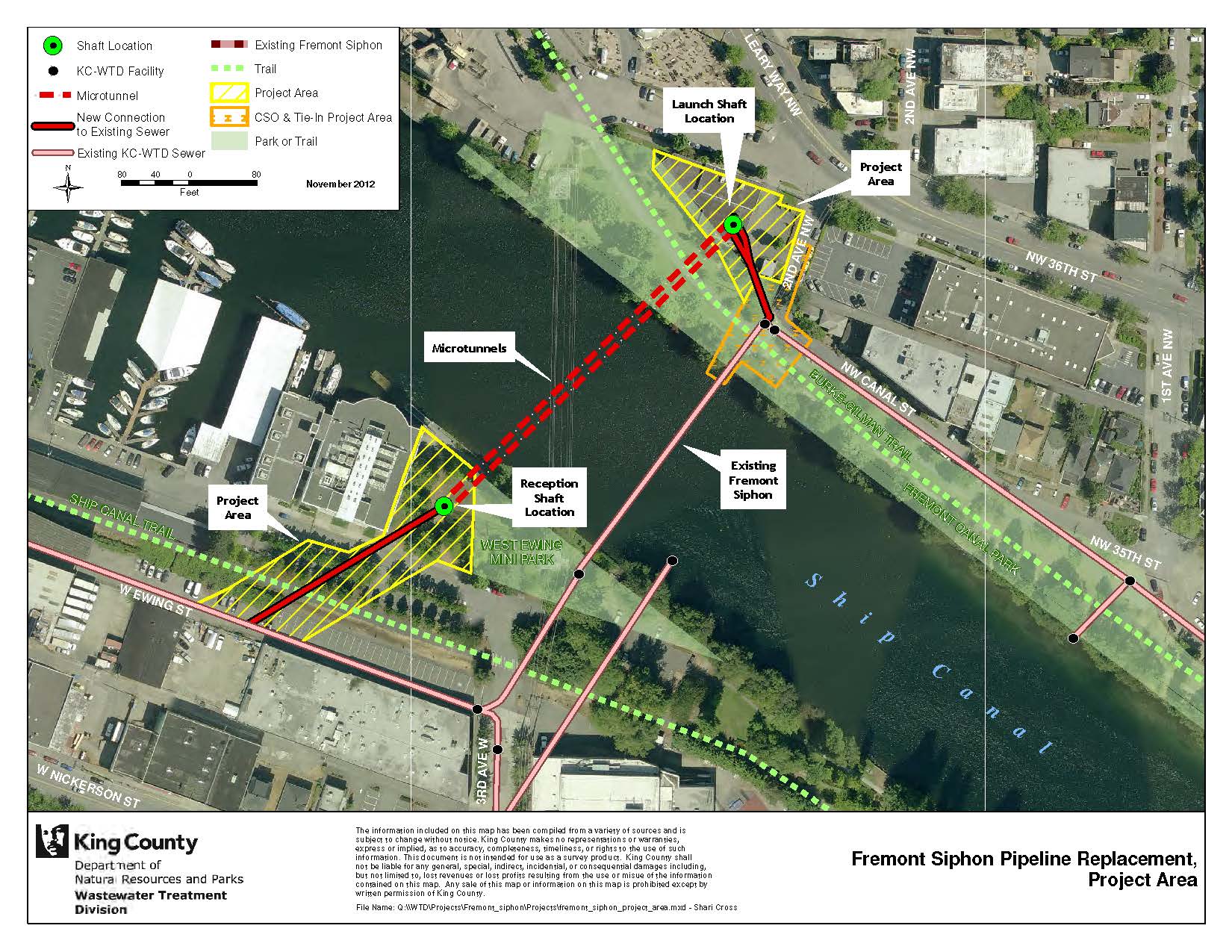Fremont siphon replacement
Completed Spring 2017
Project description
King County replaced the Fremont Siphon, a major sewer pipe running under the Ship Canal between Fremont and Queen Anne. The new siphon is located west of the existing siphon to reduce project risks and impacts to the community. Construction began in early 2015 and continued until spring 2017. The old siphon was decommissioned.

Learn more about the project
Why do we need this project?
The Fremont Siphon has provided safe, reliable sewer service to north Seattle and other cities in north King County for decades. Sewage and stormwater from more than 100 square miles of pass through the Fremont Siphon every year to be cleaned and safely discharged at the county’s treatment plant in Magnolia. During storms, the pipe carries up to 220 million gallons per day, making it one of the most heavily used pipes in the regional sewer system.
The existing siphon is nearly 100 years old and has reached the end of its of service life. The new pipes will ensure north Seattle and northern King County continue to enjoy safe, reliable sewer service for decades.
Project design
Fremont facility site design – historic building with Pacific Northwest coastal plant palette
As part of the project, King County built a new odor control facility at the Fremont site. Community members, neighbors, and park users joined the King County project team at a January 2013 design workshop and March 26 open house to develop a design for this facility that fits with the community.
At the workshop, community members developed these common themes for the design:
- Extend the park feel to the site
- Fit with the historic nature of buildings in Fremont or develop a simple, modern feel
- Balance opening the view to the Ship Canal with screening the facility
- Minimize lighting onsite and minimize the pavement and fencing footprint
King County’s project team used the community’s input to develop a building style that evokes historic Fremont structures and a plant palette featuring Pacific Northwest coastal plants.

 Translate
Translate